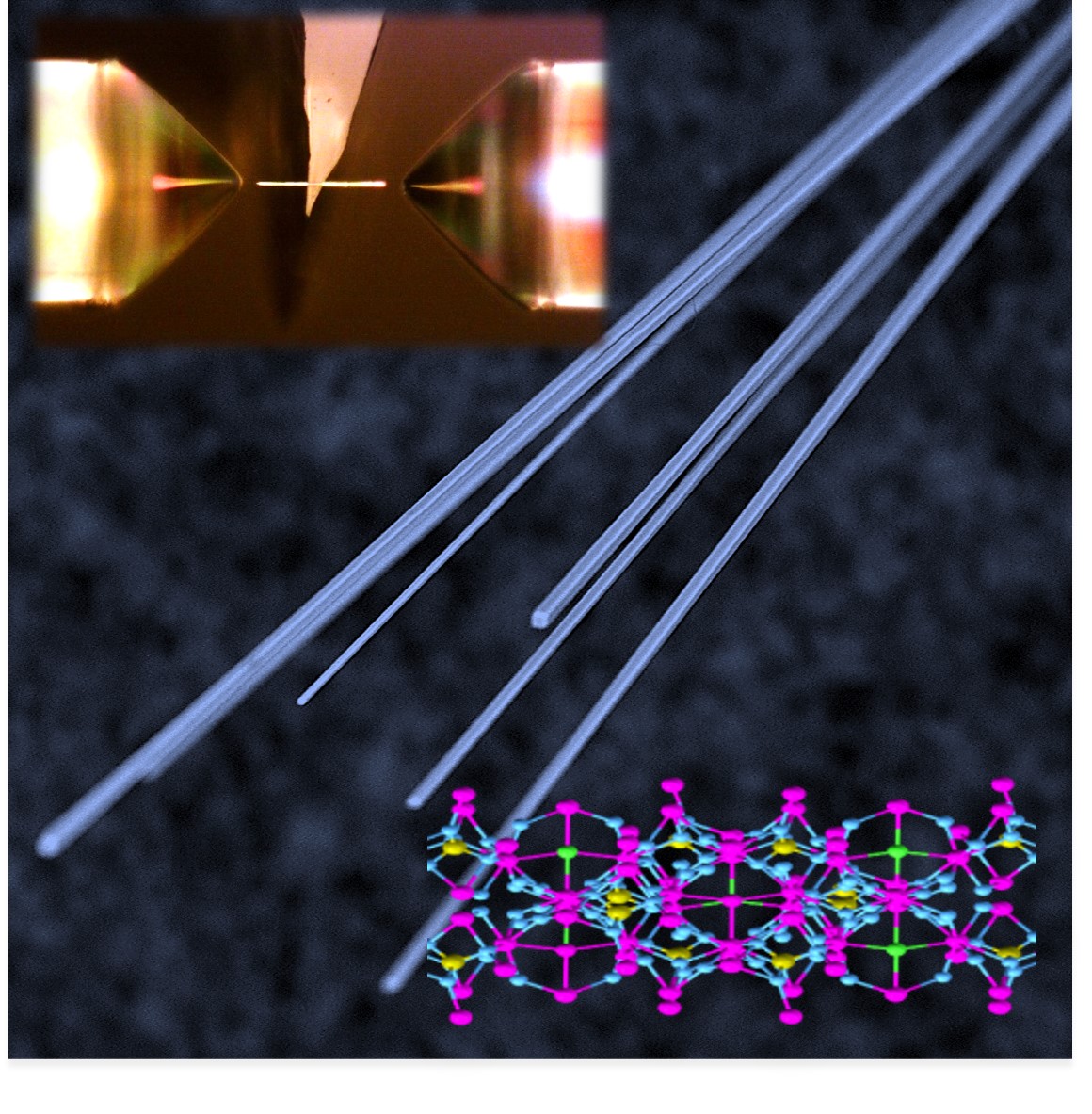JULY, 2017, Tempe, AZ -- An Arizona State University researcher has made another breakthrough using the rare-earth metal erbium as the gain material for an optical amplifier, this time with an achievement that will enable its use for the first time with small chip optical technologies. The discovery attains a decades-long goal in the field of photonic integration, in which different small optical components are tightly combined for better performance and ease of fabrication.
Details of the new optical amplification, “Giant optical gain in a single-crystal erbium chloride silicate nanowire,” were published in the July online edition of Nature Photonics.
Cun-Zheng Ning, an ASU electrical engineering professor, and Hao Sun from China’s Tsinghua University, and their teams have succeeded in raising erbium's optical gain from the typical low level of a few dB to over 100 dB per centimeter of propagation. The significant increase in optical gain will make it possible for erbium-based materials to be integrated on a chip for optical amplifiers and lasers.
In 2011, Ning led a team that discovered that particular erbium silicate salt, developed as a nanowire with a slimmer profile, could be an excellent candidate as a photonics amplification material — it allows engineers to pack up to 1,000 times more erbium in optical amplifiers, lasers, quantum information devices, switches and solar power cells.
Erbium is important for many applications, especially as an optical amplifier buried along with optical fibers for communications across and between continents. The erbium-doped amplifier is an irreplaceable technology in such long-distance communication system.
Scientists and engineers have been trying to replicate the success of signal amplification by erbium on smaller platform, such as on a small chip of an integrated photonic system. Ning’s new research solves the problem that the amount of amplification in a typical erbium-doped fiber is too small, and the required length is too long, for chip-scale integration.
Although it took several years since the discovery of the erbium nanowire technology, Ning, Sun and their team were able to perform a delicate experiment on a single nanowire that revealed the intrinsic absorption coefficient. This process allowed the materials absorption to be measured accurately for the first time, and subsequently establish the extremely high optical gain, about two orders of magnitude higher than previous reported erbium materials.
“We are excited that we finally were able to establish the large optical gain we had predicted for years based on other measurements we have done,” said Ning. “Based of this new single-crystal nanowire technology, our next goal is to integrate multiple devices on a silicon platform for integrated photonic circuits.”
“The next step is to demonstrate an actual optical device such as an optical amplifier or a laser based on the established high optical gain,” said Sun.
Other key contributors to the research are Ning’s former doctoral students, Leijun Yin and Zhicheng Liu, who carried out the early research and have since graduated.















